How to make watercolours?
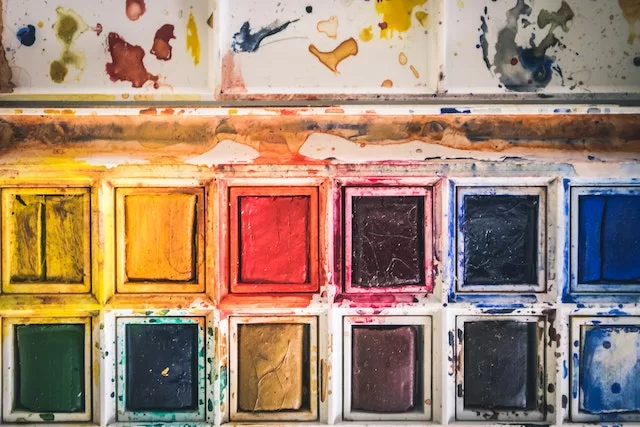
A short history of watercolours
Prehistoric cave paintings are arguably the first works to have been produced in watercolour. The "artists" of this period mixed pigment and water (perhaps even saliva). But it wasn't until the time of the Pharaohs, and later the emperors of China, that watercolor appeared as we know it today.
In the Middle Ages, watercolors were used for illuminated manuscripts. It fell into oblivion for some time, before regaining its letters of nobility with Albrecht Dürer.
Among the great artists who have used watercolors are Henri de Toulouse-Lautrec, Degas, William Turner and Egon Schiele.
Before you start
If you search for watercolor recipes on the Internet, you'll notice that there are dozens, but not all of them are the same. After testing many recipes, I finally found the one that, for me, gives the best results!
You don't need to be an expert in chemistry to make this recipe, but you will still need some equipment to obtain a quality watercolor.

Recipe
Between 00:10 and 02:00
Add another 24 h if you need to prepare gum arabic granules.
Easy
Cheap
Ingredients
- Pigment
- Liquid or granulated gum arabic
- Demineralized water
- Glycerine
- Clove essential oil
- Honey
- Egg whites (optional)
Utensils
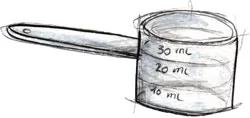
1 measuring spoon

1 x 100ml opaque bottle

Watercolour buckets

1 pipette

Plastic film

1 salad bowl

1 thumbwheel
If you don't have one, you can use a spatula.
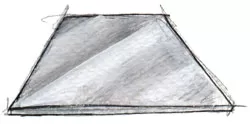
1 glass plate
Where a marble plaque
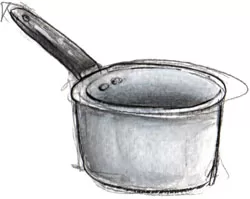
1 saucepan
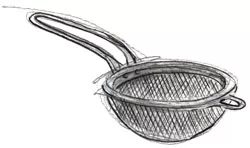
1 sieve colander

Small jars
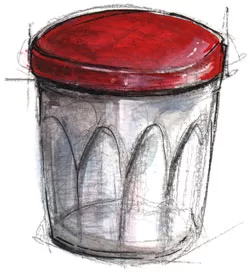
3 jars
Jam jar type
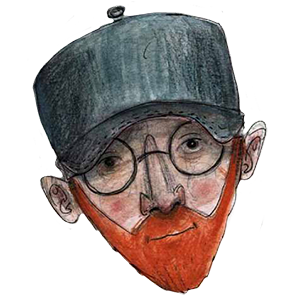
Julien's tips and tricks
If you don't have watercolor cups, no problem! You can use an ice cube tray. Some artists also use shells, which are an excellent idea. You can even put them in the (cleaned) cups of acorns you pick up on your walks in the forest.
The important thing is that your container doesn't oxidize, otherwise your watercolors may darken or even become unusable.

Ice cube tray
Preparation
Part 1 - The binder
All paints are primarily composed of pigments mixed with a binder, and watercolors are no exception. This binder enables the paint to adhere to the support. This step is therefore essential, as it will largely determine the quality of your watercolors.
1. Production of gummed water
If you have liquid gum arabicskip the first part of the next step and transfer it directly into a jar (we'll make it better!).
On the other hand, if you've chosen gum arabic in grain (or crystal) form, you'll need to prepare your own gummed water.
- To do this, pour 1 part gum arabic and 2 parts demineralized water into a jar. You can then wait 24 hours for the gum to dissolve, or heat it in a bain-marie to speed up the process.
- Then pour the gummed water into a jar, filtering it through a sieve to remove impurities.
2. Production of honey water
Pour 1 part honey and 1 part demineralized water into the pan and stir. You can use the measuring spoon to calculate the volumes.
Heat for 5-10 minutes over low heat to reduce the mixture to 1 volume.
Leave to cool.
Pour the mixture into a new jar.
3. Egg white juice (optional)
Whisk the egg whites in a bowl.
Cover with cling film for at least two hours.
Pour the juice from the bottom of the bowl into the third jar.
Why egg white?
This ingredient may come as a surprise in the recipe, and even annoy some.
First of all, I'd like to make it clear that this is not a mandatory ingredient. Without it, your watercolour recipe will work just as well.
For my part, I use it because the egg white helps the watercolor stick to the paper by reinforcing its adhesive power, and adds a layer that further protects it from external elements (a bit like a varnish).
4. Binder assembly
- If you have chosen to use egg whites: In the opaque bottle, pour 2 volumes of gummed water with 2 volumes of egg white juice and 1 volume of honey water.
- If you have chosen not to use egg white: Pour 3 parts gummed water and 1 part honey water into the opaque bottle.
Add a few drops of clove essential oil (1 drop for 20 ml or 20 g) if you want to keep your binder longer.
Now add a few drops of glycerine (about 2 drops for 10 ml or 10 g).
Glycerine is both a drying retardant and a plasticizer. It helps prevent your watercolors from cracking as they harden, and will also make them a little more supple. Be careful not to add too much, or your watercolors may take weeks to dry.
Close and shake.
The binder is ready!
5. Binder conservation
You can store it for up to 15 days in the refrigerator. After that, mold may form on the surface. Personally, when this happens, I filter the binder, taking care to remove all the mould, then continue to use it as normal. I didn't notice any difference between the freshly prepared binder and the one I filtered after the mold had formed.
Part 2 - Making watercolours
Step 1
Place a small amount of pigment on the glass plate and form a sort of volcano with it, leaving a hole in the center.
I don't give the exact proportions of the ingredients in the recipe, as it depends on the quantity of watercolors you want to make.
However, to fill a 1/2 cup, you'll need to use around 8 g of pigment, the equivalent of a teaspoon, mixed with 8 g of binder.
Step 2
Use the pipette to pour binder into the center of the "volcano".
I usually mix 1 part pigment to 1 part binder, but this can vary according to the nature of the pigment.
Add a little at a time. If you add too little binder, it will be difficult to obtain a homogeneous paste. If you add too much, the mixture will take longer to dry. Each pigment reacts differently, so it's up to you to decide how much binder to add.
Step 3
Use the wheel (or spatula) to disperse, i.e. mix the pigments and binder.
If you're using the wheel, place it over the pigments and binder and start using circular movements, forcing a little, to mix them well. A sort of paste will form. Bring it back to the center with the spatula. Repeat this process several times.
If you opt for the spatula, mash the pigments and binder to a paste. Spread it out, forcing the spatula a little. Gather it in the center and crush again. Repeat until the mixture is homogeneous.
Continue the operation at least until you can no longer hear the pigment "squeaking" under the wheel or spatula.
Some pigments require more work than others. The more time you spend on this stage, the finer your watercolour will be.
Step 4
Use the spatula to pour the paste into the cups, then put the excess into the small jars, which you should keep refrigerated.
Step 5
After one or two days, the water in the watercolors will evaporate and they will lose volume and settle (and maybe even crack a little).
Don't panic!
Simply refill the level with the surplus you have stored in the fridge.
Step 6
Leave to air dry.
This stage is very important, as poor drying can lead to the appearance of mold on your watercolors. There are a few rules to follow:
- Do not dry your watercolors in a humid environment.
- Do not cover them during drying. If they are placed in a box, leave the lid open.
- To speed up drying, especially in winter, you can place them above a radiator, taking care to observe basic safety rules to avoid any risk.
If, despite this, mold appears, take a damp cloth and remove it.
In general, air-drying in summer takes about a week. You'll notice that some pigments dry faster than others.
And that's how you can make your own watercolours!
Share
And also :
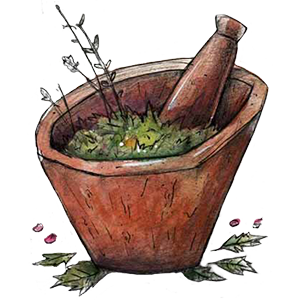
Courses and workshops
During the year, I organize various workshops and courses to learn how to make your own paints.
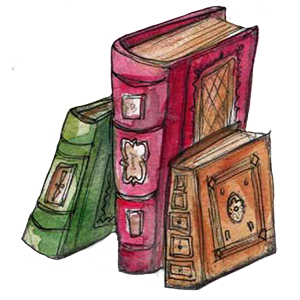
Resources
I've collected websites and books dedicated to making paints, stains, inks and other artistic materials.
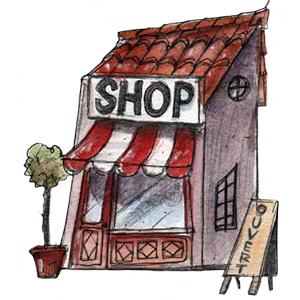
Store
I'm selling some of my creations.
Newsletter
If you sign up, you won't receive any spam from me, just one or two newsletters a month, no more.
- HOME
- ABOUT US
- MY WORKS
- MAKE YOUR OWN PAINTS
- How to make watercolours?
- How to make charcoal easily?
- How to make natural pigments easily?
- How to make dry pastels?
- How do I easily re-tension a canvas?
- How do I make black ink for calligraphy?
- Making lye with wood ash
- Making flour paint
- Making blue pigments with indigo
- Recipe for iron acetate (nail soup)
- Make soda crystals with baking soda.
- Madder lacquer recipe
- Gaude lacquer recipe
- Making gouache
- How to make walnut stain easily?
- How do I make calcium carbonate at home?
- How to make egg paint?
- WORKSHOPS / COURSES
- RESOURCES
- FORUM
- THE SHOP
- CONTACT

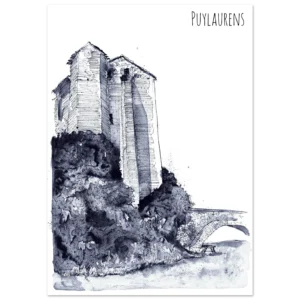
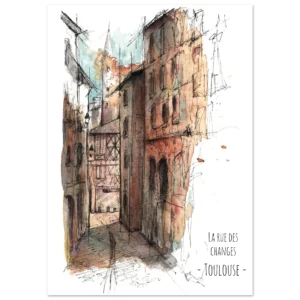
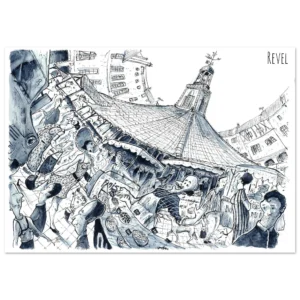
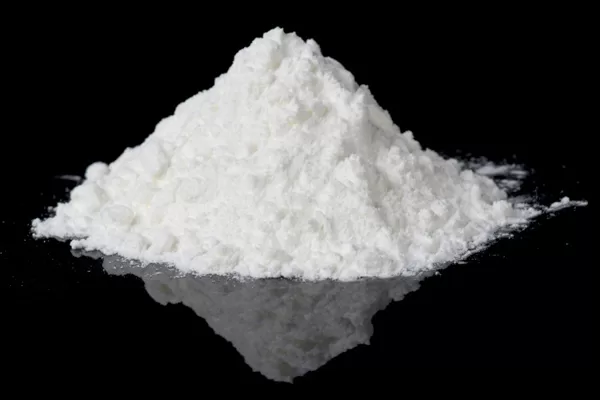
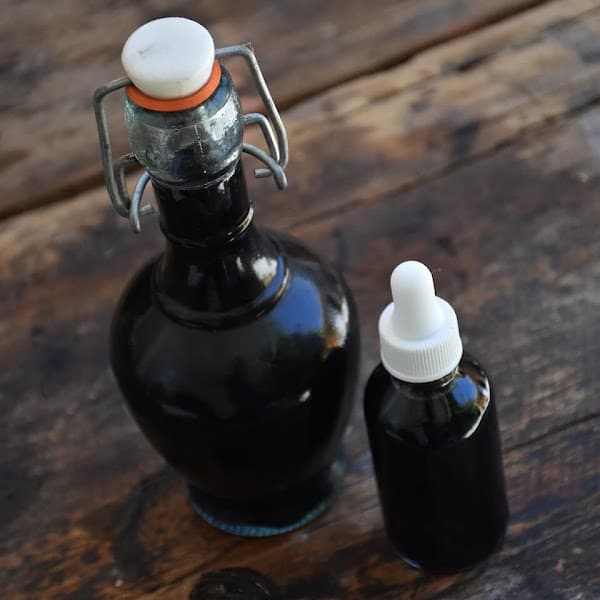


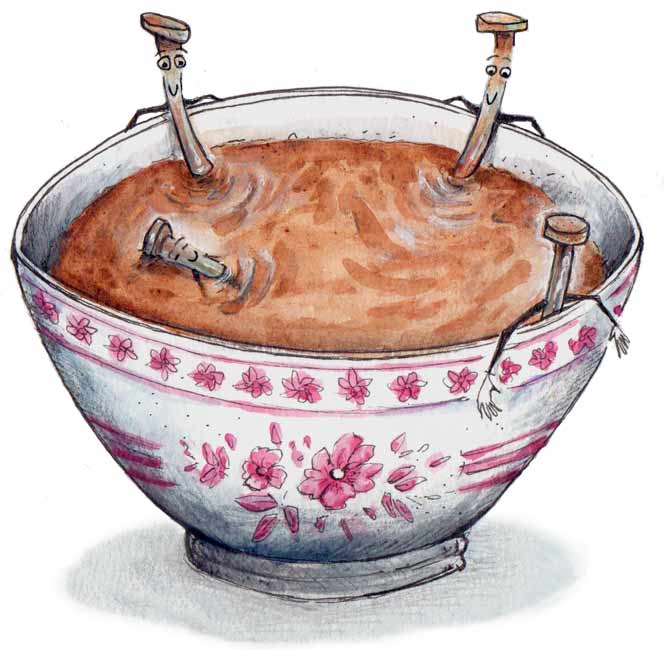
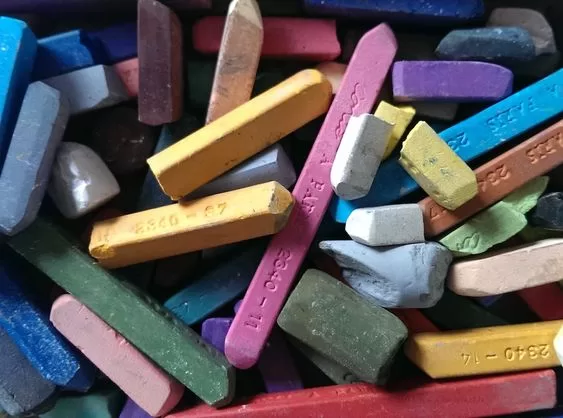
16 réponses
Hello, I'm looking to make a particular watercolor color that I can't find, I'll try to follow your recipe. I want a grainy color, do I need to add any extra ingredients to obtain this effect?
Hello. If you're looking to create a grainy color, perhaps you could try coarsely grinding the pigment with the wheel (the more you grind the pigment, the finer and smoother the paint becomes). Have a nice day!
Hello, is there an alternative to egg white? What does it bring? Thank you in advance for your reply.
Hello,
egg white is not essential to the success of this recipe. You can make watercolors without it. I include it because it adds a little more adherence to the watercolors. It also serves to protect the paint, providing a kind of varnish effect (in the past, egg white was used as a temporary varnish).
Have a nice day.
Hello,
Where can I find pigments to make red, fuschia, orange?
Thank you
Hello,
You can buy pigments in fine art stores such as Dalbe or Rougier & Plé, as well as on the Internet. Here are a few websites:
https://www.ocres-de-france.com
https://www.moulincouleurs.fr/fr/4-pigments-naturels-terres-et-ocres
https://www.couleur-pigments.fr/fr/
https://www.geant-beaux-arts.fr/peinture/autres-techniques-de-peinture/pigments-et-liants/
You can also make pigments from plants(https://julienguinet.com/laques/comment-fabriquer-pigments-naturels).
You have cochineal (or kermes) and madder, which give red. For fuchsia, I use elderberries or American grapes. For orange hues, you can make them from plants like onions, which can give orange yellows.
I wish you a very good day.
Hello,
a friend gave me the brushes which are a bit like fountain pens and I'd like to transform my watercolour cubes to put them in, do you have a method for doing this without losing the pigmentation?
Hello Celia,
I'm not sure I have a solution that will retain 100% of the pigmentation... To fill the brush reservoir, you'll have to liquefy the watercolors, which will inevitably make them a little more diluted and slightly lighter. However, I think it's worth a try. Here's how I'd proceed if I were you:
- I would remove the watercolor from the cubes with a spatula and place it on a glass or marble plate, then add a little water and a few drops of glycerine (the glycerine will keep the watercolor liquid in the brush; without it, it may dry out and clog the brush). For the ratio, I'd use 10 drops of water to 3 of glycerine.
- Using a spatula or wheel, I mix the water and watercolor until the paint is liquid enough to fill the brush.
- At this stage, I'd do a test on paper to check that the watercolor isn't too transparent. If it is, there's too much water. In this case, you'll need to let the paint dry so that the water evaporates. If, at this point, the paint isn't liquid enough, I'll add more water and glycerine (drop by drop) until the consistency is fluid enough to fill the brush without the watercolor becoming too liquid or too transparent. This is undoubtedly the most delicate part of the method.
- As the watercolor will remain liquid, mildew could appear. To avoid this, I would add 2 drops of clove essential oil and shake the brush vigorously. Clove oil is a natural preservative.
This is how I'd do it if I had to fill the brush with watercolor.
In the worst-case scenario, if the method doesn't work, simply collect the watercolour in the brush, put it back in the cubes and wait for it to dry and return to its original shape.
I hope this helps.
Thank you, thank you, thank you so much for the tips! fortunately all I need is the glycerine and I might give it a try 😀
Bonjour et tous mes vœux je viens de découvrir votre site avec plaisir je favorise mes pigments et aquarelles j'ai essayé le liant avec miel et glycérine et je trouve que cela a une influence sur le rendu de la couleur comme le jaune avec gaude en fonçant la couleur
I was wondering if I should change honey (does it contain tannin?) have you had the same problem as with gum arabic and tube yellow is bright thank you
Hello,
I haven't encountered this problem yet, so I can't say exactly where it may be coming from. In my opinion, there could be several reasons:
- Indeed, honey can contain tannins, but in general, if they are present, it's in very small quantities. In theory, although it can have a slight influence on color, I would tend to think that the impact should be minimal. If your color has lost considerable liveliness, it seems unlikely to me that this is the main reason.
- I know that some honeys have a higher concentration of iron, magnesium or potassium than others. This could have an effect on the color of watercolors. Iron, in particular, is known to darken colors.
- Another possibility to consider: have you used a pan or utensils that might be slightly oxidized during the watercolor-making process? The presence of iron or oxidation residues could have an impact on the colors.
It's true that some plant pigments can react to certain ingredients, while others are not sensitive at all. That's the difficulty of working with this kind of pigment.
If you don't mind me saying so, I'd advise you to try using acacia honey. This honey is clearer than others and should not normally contain iron or tannins.
I wish you all the best for 2025!
Thank you very much, I will indeed try with acacia honey as I used stainless steel utensils. However, I've just bought some white gum arabic and I'm going to filter it as you recommend.
I really appreciate your approach and your sharing.
Best wishes for 2025
Bonjour, merci pour la recette, je répond me compte que j'ai mis un peu trop de glycérine la raison pour laquelle le test ne sèche pas sur papier. 🌹
Hello,
Yes, too much glycerine causes this problem. Your watercolors will dry, but it will take longer. You could perhaps put your watercolor back on the glass plate, or where you crushed your pigments, and add more pigments if you still have some, without adding more glycerine. Alternatively, you could "clean" the watercolor by putting it in a glass of water, waiting until it's all diluted, then filtering through a coffee filter before putting your watercolor back in the cup. By dissolving the watercolor in the water, the glycerine, which is soluble, will spread throughout the liquid. By filtering the solution, some of the glycerine is removed with the water. In this way, you remove some of the glycerine and your watercolors dry faster.
Bonjour Julien,
Merci pour votre recette qui m’a donné envie de me lancer !
En essayant avec de la malachite et des cendres de cheminée, je me suis demandée: qu’en est-il de la résistance à la lumière s’il vous plaît ?
D’autre part, j’ai passé 2 fois plus de temps (environ 5h) à mélanger les cendres au liant et j’ai fini par ajouter un peu plus de liant pour obtenir quelque chose de plus onctueux. Alors je me demandais si c’était dû au fait que je n’avais pas assez broyé les cendres ou si certains pigments nécessitaient plus de temps de mélange. Cela m’a aussi amené à me demander comment savoir si mon pigment est assez fin quand je le broie. Le fait que le pigment s’envole comme de la fumée quand on le broie, peut-il être un indice ? Car en filtrant avec un filtre à thé, tout ou presque passe, dois-je changer de filtre pour m’assurer plus de finesse ?
Merci d’avance pour votre attention. Bonne journée !
Bonjour Marie-Atina,
Tout d’abord, je suis très heureux que mes recettes vous aient donné envie de vous lancer. Je vais essayer de répondre à vos questions point par point.
Pour commencer, concernant la malachite : sa résistance à la lumière est globalement bonne, mais elle reste sensible à l’acidité. Avec le temps, elle peut se transformer, par exemple noircir si elle est en contact avec des éléments acides.
En ce qui concerne les cendres de cheminée, on sort effectivement du champ des pigments « traditionnels » que j’ai testés pour l’aquarelle. Les cendres sont des résidus de combustion, donc leur composition peut varier énormément en fonction de ce qui a été brûlé. De manière générale, je dirais que leur stabilité dépendra beaucoup de leur origine.
Quant au temps passé à broyer, la durée nécessaire peut vraiment varier selon la nature du pigment et la quantité à traiter. Je dois avouer ne jamais avoir passé 5 heures sur un pigment, mais cela peut s’expliquer par plusieurs facteurs. Par exemple :
– Le type d’outil : une spatule prend plus de temps qu’une molette à broyer.
– La composition des cendres : elles peuvent contenir des résidus durs (petits cailloux, particules métalliques) qui ralentissent le broyage.
– Le support sur lequel vous broyez les pigments est également important. Personnellement, j’aime bien utiliser une plaque de marbre : elle ne bouge pas et je trouve que cela permet d’obtenir un très bon résultat.
Comme je l’indique dans la recette, la quantité de liant à ajouter peut aussi beaucoup varier selon la nature du pigment. Certains pigments ont une structure poreuse ou fibreuse qui « boit » littéralement le liant, ou sont simplement plus difficiles à mouiller. C’est probablement ce que vous avez rencontré avec les cendres.
Pour répondre à votre question sur la finesse du pigment, voici quelques façons de savoir s’il est suffisamment fin :
– Au toucher : il doit être très fin, presque comme du talc, sans sensation de grain. On ne doit pratiquement pas le sentir sous le doigt.
Lors du broyage :
– S’il s’envole comme de la fumée, c’est souvent bon signe, mais cela ne garantit pas qu’il est bien dispersé dans le liant.
– Le son est un excellent indicateur : tant que le pigment « grince » sous la molette ou la spatule, c’est qu’il y a encore des grains à broyer. Quand le bruit disparaît, c’est généralement bon signe : la pâte est homogène.
Vous pouvez aussi peindre une ligne sur une feuille de papier : si elle est bien lisse, sans résidus visibles, c’est également un très bon signe que votre aquarelle est extra-fine.
Par contre, pour vous assurer de la finesse d’un pigment à l’aide d’un filtre, personnellement, je vous conseillerais plutôt un tamis extra-fin, voire même un tamis de laboratoire (mais c’est un petit investissement). Le filtre à thé, quant à lui, n’est peut-être pas le plus adapté, car il n’est pas assez fin.
Il y a toujours, dans ce genre de recette — la mienne comme celles d’autres artistes que l’on trouve sur internet — une part d’expérimentation personnelle. Il m’est impossible de donner une formule exacte qui fonctionnerait avec tous les pigments, car chacun réagit différemment. Mais j’espère tout de même avoir pu vous aider un peu avec mes réponses.
N’hésitez pas à me faire part de vos prochaines expériences, c’est toujours un plaisir de suivre l’évolution des expérimentations !
Très bonne journée à vous,
Julien